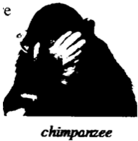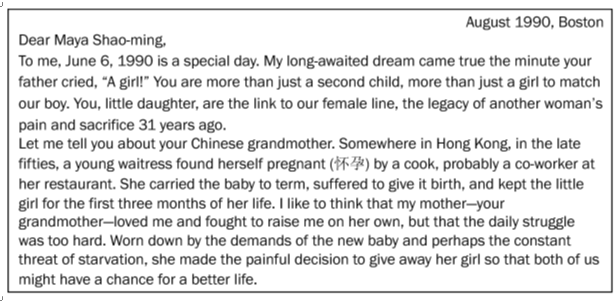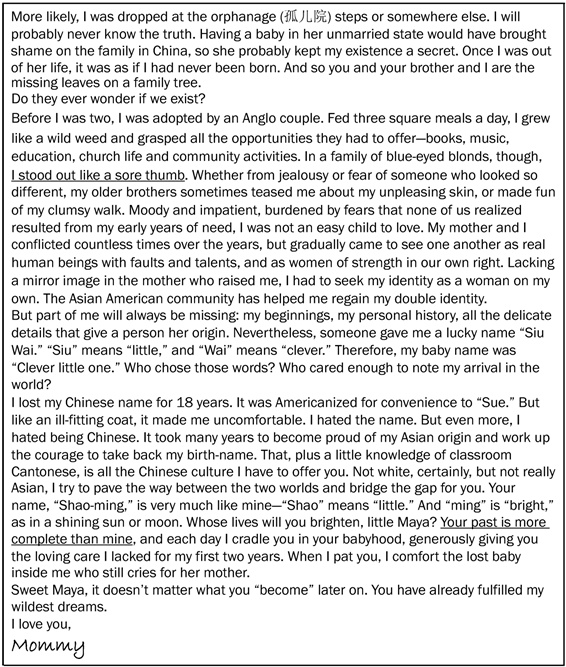题目内容
4. Most people agree that honesty is a good thing.But does Mother Nature agree?Animals can't talk,but can they lie in other ways?Can they lie with their bodies and behavior?Animal experts may not call it lying,but they do agree that many animals,from birds to chimpanzees,behave dishonestly to fool other animals.Why?Dishonesty often helps them survive.
Most people agree that honesty is a good thing.But does Mother Nature agree?Animals can't talk,but can they lie in other ways?Can they lie with their bodies and behavior?Animal experts may not call it lying,but they do agree that many animals,from birds to chimpanzees,behave dishonestly to fool other animals.Why?Dishonesty often helps them survive.Many kinds of birds are very successful at fooling other animals.For example,a bird called the plover sometimes pretends to be hurt in order to protect its young.When a predator(猎食动物)gets close to its nest,the plover leads the predator away from the nest.How?It pretends to have a broken wing.The predator follows the"hurt"adult,leaving the baby birds safe in the nest.
Another kind of bird,the scrub jay,buries its food so it always has something to eat.Scrub jays are also thieves.They watch where others bury their food and steal it.But clever scrub jays seem to know when a thief is watching them.So they go back later,unbury the food,and bury it again somewhere else.
Birds called cuckoos have found a way to have babies without doing much work.How?They don't make nests.Instead,they get into other birds'nests secretly.Then they lay their eggs and fly away.When the baby birds come out,their adoptive parents feed them.
Chimpanzees,or chimps,can also be sneaky.After a fight,the losing chimp will give its hand to the other.When the winning chimp puts out its hand,too,the chimps are friendly again.But an animal expert once saw a losing chimp take the winner's hand and start fighting again.
Chimps are sneaky in other ways,too.When chimps find food that they love,such as bananas,it is natural for them to cry out.Then other chimps come running.But some clever chimps learn to cry very softly when they find food.That way,other chimps don't hear them,and they don't need to share their food.
As children,many of us learn the saying"You can't fool Mother Nature."But maybe you can't trust her,either.
66.A plover protects its young from a predator byD.
A.getting closer to its young B.driving away the adult predator
C.leaving its young in another nest D.pretending to be injured
67.By"Chimpanzees,or chimps,can also be sneaky"(paragraph 5),the author meansB.
A.chimps are ready to attack others B.chimps are sometimes dishonest
C.chimps are jealous of the winners D.chimps can be selfish too
68.Which of the following is true according to the passage?A.
A.Some chimps lower their cry to keep food away from others.
B.The losing chimp won the fight by taking the winner's hand.
C.Cuckoos fool their adoptive parents by making no nests.
D.Some clever scrub jays often steal their food back.
69.Which of the following might be the best title of the passage?A.
A.Do animals lie?B.Does Mother Nature fool animals?
C.How do animals learn to lie?D.How does honesty help animals survive?
分析 本文是一篇说明文,说明了自然界也存在很多欺骗其他动物的现象,文章通过举了一些鸟类和大猩猩的例子,说明动物有时会撒谎,这也是它们生存的需要.
解答 66.D 细节理解题.根据第二段的第二句话"a bird called the plover sometimes pretends to be hurt in order to protect its young."可知,啄木鸟保护孩子不受猎食动物侵害是通过假装受伤,所以选D.
67.B 细节理解题.根据第五段的最后一个句子"But an animal expert once saw a losing chimp take the winner's hand and start fighting again."一个输了的大猩猩抓住获胜的大猩猩的手又开始打斗了,可知这句话的意思是大猩猩也可能不诚实,所以选B.
68.A 细节理解题:根据文章第六段的句子"But some clever chimps learn to cry very softly when they find food.That way,other chimps don't hear them,and they don't need to share their food"可知,一些大猩猩放低它们的叫声,这样让别的大猩猩得不到食物,所以选A.
69.A 主旨归纳题:根据全篇文章的内容和第一段第二行的句子"Can they lie with their bodies and behavior?"可知,这篇文章讲的是动物也会撒谎,故选A.
点评 解答细节理解题时,一个常用的方法就是运用定位法,即根据题干和选项中的关键词从原文中找到相关的句子,与选项进行比较从而确定答案;推理判断题既要求学生透过文章表面文字信息推测文章隐含意思,又要求学生对作者的态度、意图及文章细节的发展作正确的推理判断,力求从作者的角度去考虑,不要固守自己的看法或观点.

| A. | assessment | B. | account | C. | survey | D. | summary |
| A. | being buried | B. | buried | C. | to be buried | D. | burying |

